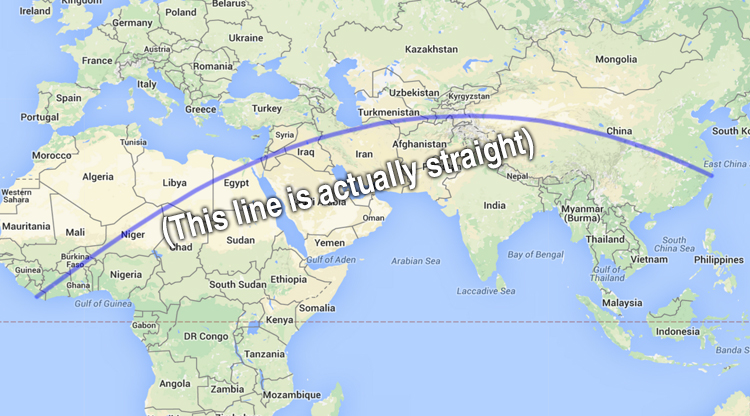China has sourced a Vietnamese geography text book for ninth-graders to internationally substantiate its claims of ownership of the Paracel Islands in the South China Sea.
The photocopied pages of the text book which was published 40 years ago have been forwarded to the Secretary General of the United Nations, Ban Ki-moon, with the request that is be disseminated within the General Assembly for all 193 members to see.
The pages from the textbook, printed in 1972, include a map of the region, a note from 1958 and the cover of the World Atlas.
Based on this mid-20th century map, which shows a line delineating apparent Middle Kingdom territory, China claims almost all of the sea.
Conversely Vietnam says it has controlled the Paracels for centuries.
Ownership rights within the South China Sea is a contentious issue with many countries claiming overlapping territory.
According to China’s deputy permanent representative to the United Nations, Wang Min, China wanted to inform the international community of their understanding of how the territory is divided.
The UN has agreed to act as a go between within this territorial debate, the BBC reported.
UN spokesman Stephane Dujarric called for both sides to resolve the dispute peacefully and legally.
In the past week, Vietnam and China have both sent dossiers outlining their claims in the South China Sea to UN chief Ban Ki-moon.
However, senior fellow in the Maritime Security Program at the S. Rajaratnam School of International Studies at Nanyang Tachnological University, Sam Bateman, said that this is a public relations campaign to boost international support.
"They're trying to catch up lost ground," he said.
"I think Vietnam has been winning the public relations battle over the past few weeks, ever since this incident blew up."
The latest territorial row between Vietnam and China flared in May when China's National Offshore Oil Corporation (CNOOC) moved the drilling rig near what China calls the Xisha Islands.
In Vietnam they're known as the Hoang Sa Islands.
China claims CNOOC has been exploring the area for 10 years, and this latest drilling operation "falls well within China's sovereignty and jurisdiction."
Vietnam says the "illicit" rig is placed in its exclusive economic zone and continental shelf, and has demanded China remove the rig, its vessels and resolve its maritime disputes.
Both sides have been repeating the claims and demands, but neither has budged.
The standoff at sea seems at least likely to continue until China removes the rig, as planned, on August 15.
Bateman said international arbitration will not solve the problem because the two countries would be reluctant to risk a negative ruling triggering potential outcry in their respective countries. He added, particularly in the case of Vietnam, who in his mind has the weaker case of the two nations.
“Most objective, independent, international observers agree that China's case for sovereignty over the Paracels is better than Vietnam's for the very reasons that China has now set out in its submission to the U.N.," Bateman said.
According to Bateman, Vietnam’s most advantageous avenue would be to concede ownership and negotiate concessions such as access to fishing waters and an agreement to jointly develop oil and gas resources.
"Vietnam could negotiate concessions with China but unfortunately it's probably getting increasingly unlikely as the Vietnamese government has locked itself into the idea that the Paracels are indisputably part of Vietnam and there would be a huge public outcry if they appeared now to be conceding sovereignty," he said.
Euan Graham, another senior fellow at the RSIS at Nanyang Technological University in Singapore, said Vietnam was "understandably caught out by the fact that China was seeking to press its claims."
Relations in the past few years had been good, he said, with agreement reached on a number of fronts that suggested the countries were moving towards a cooperative approach.
"I think the unilateral deployment of an oil rig that's surrounded by a security cordon including naval ships and within the envelope of air cover clearly doesn't pass the 'straight face' test on setting up arrangements of a practical nature. I think it was clearly provocative in that sense," he said, of the Chinese oil rig.
China’s recently submitted ‘position paper’ to the U.N. accused Vietnam of “illegally and forcefully” disrupting the rigs work by ramming Chinese government ships a total 1,416 times.
The paper also suggested Vietnam ‘frogmen and other underwater agents’ dropped obstacles such as fishing nets and floating objects in the area of the oil rig.
Meanwhile, Vietnam claims China is “seriously” violating their “sovereign right” with on-going claims that Chinese ships “rammed and sank” a Vietnamese fishing vessel.
Analysts say the claims and counter-claims are muddying what should be a clear approach to cooperation in the region, as laid out in the 1982 U.N. Convention on the Law of the Sea.
"Even if it's an area in dispute, there is in the U.N. Law of the Sea an obligation to enter into arrangements of a practical nature," Graham said. Bateman agreed that the legal dispute over who owns what was stalling efforts to protect and develop the region
"What I'm concerned about is all this debate is leading nowhere in terms of establishing effective regimes for managing the South China Sea and its resources," Bateman said.
"It's taking us away from the effective cooperation that's necessary because the reality is that I don't think the sovereignty claims are ever going to be settled in the foreseeable future."
This latest attempt from China to secure the ownership of these islands in the South China Sea, that Vietnam also claims, comes after alleged dueling boats, anti-Chinese riots and rebounding accusations between both countries.





















0 User Comments